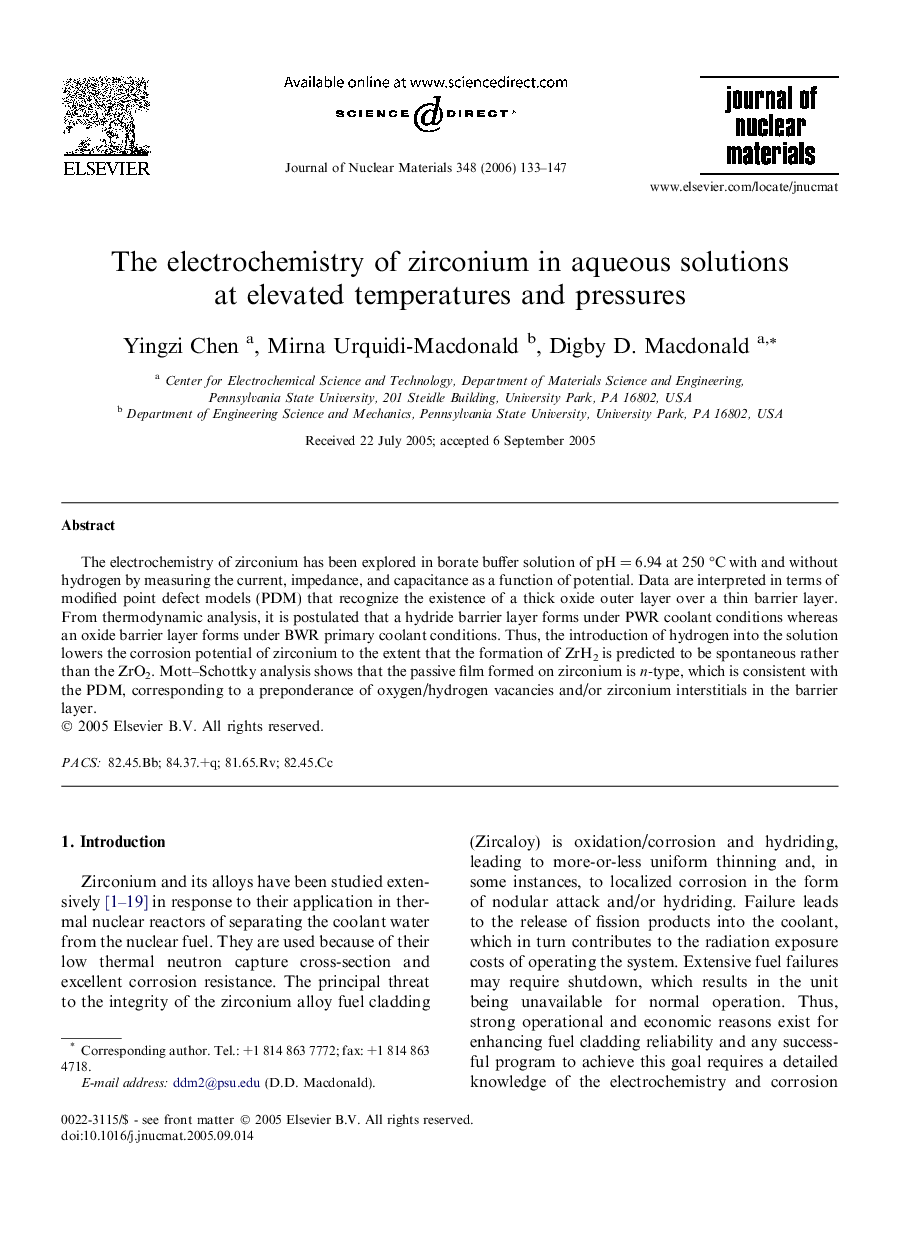| Article ID | Journal | Published Year | Pages | File Type |
|---|---|---|---|---|
| 1569953 | Journal of Nuclear Materials | 2006 | 15 Pages |
The electrochemistry of zirconium has been explored in borate buffer solution of pH = 6.94 at 250 °C with and without hydrogen by measuring the current, impedance, and capacitance as a function of potential. Data are interpreted in terms of modified point defect models (PDM) that recognize the existence of a thick oxide outer layer over a thin barrier layer. From thermodynamic analysis, it is postulated that a hydride barrier layer forms under PWR coolant conditions whereas an oxide barrier layer forms under BWR primary coolant conditions. Thus, the introduction of hydrogen into the solution lowers the corrosion potential of zirconium to the extent that the formation of ZrH2 is predicted to be spontaneous rather than the ZrO2. Mott–Schottky analysis shows that the passive film formed on zirconium is n-type, which is consistent with the PDM, corresponding to a preponderance of oxygen/hydrogen vacancies and/or zirconium interstitials in the barrier layer.
